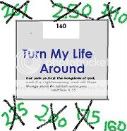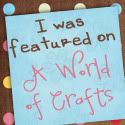One of the benefits of being on the Homeschool Review Crew is discovering new companies to help us in our homeschool journey. While the Crew has reviewed products from Home School in the Woods in the past, this is the first time we have been on one of these reviews. We were allowed to choose a couple of their individual À La Carte products which they are now offering. I couldn't pass up the chance to use these fun products to help us review Ancient Egypt, which we have been learning about with our core curriculum. In fact, I just love the perfect timing of this review.
We received the Snapshot Moments in History: Ancient Egypt Timeline in addition to a file folder game called Tomb Dash!, both of which were originally created for Project Passport: Ancient Egypt. We were provided Family licenses, meaning they were to be printed out only for use in our family. However, Home School in the Woods does offer Teacher or School Licenses as well.
In order to use these products, I needed to download them and open them up with Adobe Reader to print them properly. A printer with ink was also needed. I was thrilled that they were black and white, instead of color, as it is so much better on the budget. It also gives the children a chance to be more involved as they get to color their project and make it more individualized. The images from the company show colored cardstock being used for the timeline pages, but I found that white worked just fine. You will also need a few tools to complete the projects. I used my paper cutter and a three-hole punch to prep the timeline pages. Also needed for both were scissors, crayons, colored pencils, and glue sticks.
Both of these downloadable projects have been helping us review information we had learned previously this year, plus has been teaching us new details of Ancient Egypt.
The first project I printed out was the Ancient Egypt Timeline.
This 26-page file consists of license information, instructions & tips, and the actual timeline pages. There are eight timeline notebook pages. Additionally, there are four pages of images with their captions and two pages of extras/momentos, all of which the children needed to color, cut out, and glue onto the proper space on the scrapbook-style timeline. Also included in the download were eight pages that showed what the timeline pages should look like once complete. I did not feel it was necessary to print these out. However, if you have any confusion, you could choose to print them out, or just view them on your computer for reference.
Before the children could get started on their timelines, I had to prepare the pages a bit. There were actually two different sets of directions given for preparing the timeline: accordion-style or page-by-page. The accordian-style can be pulled out to be viewed as one continuous timeline and the page-by-page can be flipped through like a photo album. Though the page-by-page would use less cardstock as the pages can be printed back to back, I chose the accordion-style as we prefer to view our timelines as a continuous flow of history.
The first page needed to be hole-punched, while the remaining pages needed to be narrowed a bit so they could fold up properly and still be able to be placed in a binder. This is where I used my paper cutter and three-hole punch. I appreciated the detailed instructions that were provided.
This is what a blank timeline page looks like. As you can see, the timeline is labeled so the children knew what image to look for on their sheets.
And this is a page of images. The captions give some details about the pictures, including dates.
We completed a page a day, so it took us a couple of weeks to complete the timelines.
We made sure to work from left to right, filling in each "column" as we went so we could make sure to be working chronologically. We would figure out which image we needed, then I would read the information under each image while they colored it.
There were times we pulled out some extra resources to help dig into the information a bit more. For instance, the first picture tells us "Mizraim's people settle in Egypt." I pulled out my Bible so we could remember just who Mizraim was. In case you weren't aware, Mizraim's grandfather was Noah and his father was Ham. We had learned, earlier in the year, how Noah's descendants spread across the world after the flood. So, it was neat to have our timeline begin with this fact.
Another time the children weren't sure what a scarab was, so I used my phone to find a picture for them.
Here are their completed first pages.
They worked really hard to get their timelines completed.
Once all the pages were complete, I taped them together so they could be placed in their history binders.
All in all, it was quite simple to put together; though Harold, who is six year old, did need help finding the correct picture and making sure he placed in in the correct spot. I believe the older girls could have completed this timeline independently. Usually I stayed by them, reading the information as we attached it to the timeline. There were times I was able to get them started and they could complete it while I cooked dinner. The older girls then helped their younger siblings.
Before we played the Tomb Dash! File Folder Game we read through the timeline information again to prepare ourselves as the timeline included a lot of information that was also used for the question cards.
This 36-page file includes information about licenses, an introduction & tips page, assembly instructions, directions for playing the game, and the actual game components. Additionally we received an audio soundtrack MP3 file which is used as a timer for the game. The game can be played with the 15 minute timer, the 10 minute timer, or without a timer for an easier game.
The pages I needed to print out were the game board, artifact cover chips, markers, title label, 7 pages of question cards plus the question card back on each page of question cards, the action card page plus the action card backs, and the game instructions. The remainder of the pages included in the file are duplicates provided for duplex printing.
In order to put the game together you will need a file folder, scissors, crayons, colored pencils, and glue sticks. You will also need a die to play the game.
There was a bit of prep work that needed to be done before we could play the game. The game board and markers need to be colored. I handed the people markers over to the children while I worked on the game board. Then I cut out the Question cards and the Action cards. I did not color these. If you are short on time and would like the cards to be colored, you could always print them onto colored cardstock.
After the game board was colored I glued it into the file folder and attached the title label. The Question cards are placed in the "Boat Pits" as are the Action cards. The number of Action cards used in the game depends on the difficulty level chosen. There are a total of 16 Action cards. This breaks down to 6 Artifact cards and 10 Trouble cards. And there are a total of 126 Question cards.
Here is the game all ready to be played.
For a normal game there should be 6 of the Trouble cards mixed in with the 6 Artifact cards. Difficult and Extreme level games use 1 Artifact card per player and then you have to add in enough Trouble cards to equal a 12 card deck, so a lot more of a chance of getting a Trouble card.
Each of the people markers have a name.
The little squares are the artifact cover chips.
The object of the game is to work together to get through the tomb, collecting artifacts along the way. Each player needs to make it to the exit with 1 artifact card.
In order to move your marker you need to first answer a question correctly.
The child to the right of the player whose turn it is will read the question from a question card. The answer is shown right below the question, so don't let the other player see the card.
The older girls would help the younger ones to come up with their answers (if they knew them).
If the player answers correctly, they get to roll the die. After landing on an artifact space the player can pick up an Action card. As mentioned above, this may be an Artifact card:
Or it may be one of several Trouble cards that hinder your ability to get through the tomb. Some are permanent troubles that you have to keep throughout the rest of the game, unless you use a turn to get rid of it. And some are temporary problems. You may have to stand on one leg for the remainder of the game, or you may have to roll a certain number to move again. And there is always a fun, adventure-related reason why these troubles come upon you, such as the passage being blocked or a wall collapsing causing dust and debris to blind you.
Once a player has an artifact they need to head toward the exit. As this is a cooperative game, players may even give another player some of their moves to help them along.
We have yet to beat this game. We get to about where you see the markers are on the board in the picture above, and we run out of time. It took me a while to process this, but my husband made the point of saying that if there were less people playing, we would make it through the tomb faster. This makes sense as then each move would get you closer to the exit, instead of having to wait for each player to make it a few spaces at a time. I've been thinking that maybe we should start playing as teams, where the older girls each have a younger sibling to work with, using only one marker. That way each team is also responsible for working out the answers to the questions together, instead of everyone trying to help (which does feel a bit like cheating).
Even though we haven't beaten the game yet, the children are enjoying playing, as am I. We are starting to learn our Ancient Egyptians facts pretty well. This is because I am keeping the same cards on the top of the pile for each game. Though I do shuffle them first. This way we are memorizing the information on these cards, and we can also tell when we have gotten further in the game as we reach new questions to work on. Once we have the current facts memorized, I will start changing them up.
I love that this product comes with the MP3 soundtrack files. We could set a regular timer, but it is neat to have the adventure music and sound effects going on in the background and gong sounds that go off at 5 minute intervals warning us that our time is running out. It adds a sense of suspense, especially because the music gets more intense toward the end of the game.
Both of these À La Carte products are wonderfully fun ways of reviewing and learning information about Ancient Egypt. The Timeline gives the children something in their binders that they can refer too whenever they want. And the game is just fun to play together as a family. Even more exciting is the fact that Home School in the Woods offers many more À La Carte products for different periods in history. In fact, I have every intention of purchasing the Ancient Greece Timeline and the Greek Life! File Folder Game to enhance our study of Ancient Greece, a time period we will be coming up to shortly with our core curriculum. Thankfully, these À La Carte products are quite affordable.
My fellow Crew Mates and I had a wide assortment of À La Carte products to choose from. You can click on the banner below to see what they reviewed and what they thought of them.



















































![[PREMIO2009.png]](http://3.bp.blogspot.com/_ymwlW_48TOU/S1pfH_bfQPI/AAAAAAAADCs/4Qq0ZzKnfUE/s1600/PREMIO2009.png)




No comments:
Post a Comment
Thank you for visiting my blog today. I love to read your comments, so please leave me one if you have the time.
Blessings